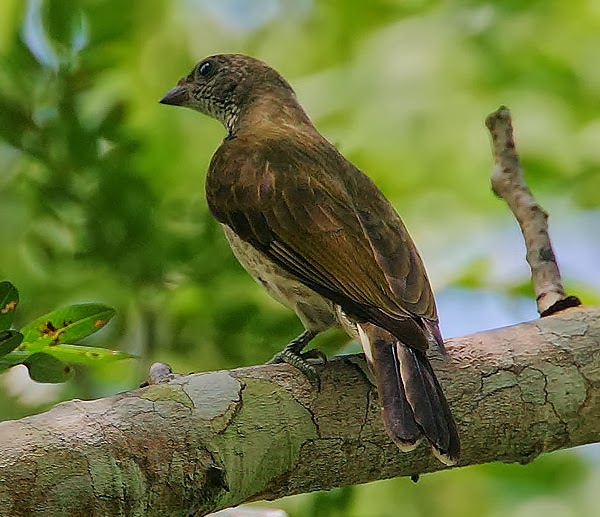 |
| Photo by Steve Garvie (Flickr) |
Common name:
scaly-throated honeyguide (en); indicador-de-garganta-malhada (pt); indicateur varié (fr); indicador variegado (es); strichelstirn-honiganzeiger (de)
Taxonomy:
Order Piciformes
Family Indicatoridae
Range:
This species is found in eastern and southern Africa, from Ethiopia, through Kenya, Uganda and Tanzania, and west to Angola and south to Mozambique, Zimbabwe and eastern South Africa.
Size:
These bird are 18-19 cm long and weigh about 60 g.
Habitat:
The scaly-throted honeyguide is mostly found in moist tropical forests, including coastal and riparian forests, but also uses dense miombo Brachystegia sp. savannas, scrublands and plantations. They are present from sea level up to an altitude of 2.200 m.
Diet:
They feed mainly on beeswax and honey bees Apis melifera, which they often obtain by guiding humans or honey badgers Mellivora capensis to bee hives and then taking the spoils after the hive is opened. They also hunt other insects such as flies, aphids, beetles, ants and caterpillars, and occasionally eat figs.
Breeding:
These birds breed in September-January. They are polygynous and brood parasitic. The males are territorial and mate with multiple females within their territory, each female then laying 1 egg in the nest of a host, either a woodpecker, a barbet or a tinkerbird. The host incubates the egg for 18 days, after which the honeyguide chick will kill the other chicks in the nest. It is fed by the hosts and fledges 27-35 days after hatching, quickly becoming fully independent after fledging.
Conservation:
IUCN status – LC (Least Concern)
This species has a very large breeding range and is reported to be relatively common and widespread. The population is suspected to be stable in the absence of evidence for any declines or substantial threats.







